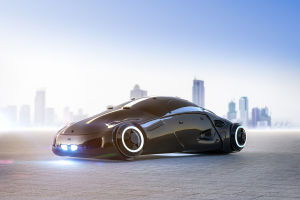As automotive technology progresses at an alarming rate, manufacturers often look to the past for inspiration and break the cycle.
The resulting retro cars create a legacy for automotive brands, and our sense of nostalgia often gathers a loyal following of car enthusiasts. Old-school design themes have set apart some of the most popular cars of recent years, and today we're highlighting some of those retro cars.
A retro car is a modern vehicle that is designed to evoke the look and feel of a classic or vintage car from a bygone era. Love it or hate it, the retro style has been a common theme throughout the history of automotive design.
Inevitably, people's imaginations of new cars are influenced by the past, but most new models emerge at least to reflect modern aesthetics or even to establish new visuals to help define the future.
Sometimes car designers go completely retro, deliberately and looking back at history and recreating classic design themes. Modern technology coupled with classic design themes is an irreproducible design concept that has been revisited by different cars over the years.
One example of a retro car is BYD's first retro sports car, which uses classic retro elements to create a very immersive experience. The entire front has a round layout structure, equipped with four round headlights that bring a sense of the American West cowboys.
Below it is a cool shark teeth chrome mesh, giving off an aged feel. The side of the car features the new name of the car, with a sense of "dolphin". The side of the car has a cigar-style body with 17-inch retro wheels, highlighting its appearance and aura.
The MINI is also a classic example of a retro recreation of a widely popular model. Beginning in 1959, the original Mini went through seven generations, built by BMC, Leyland, and Rover in the UK until production ended in 2000. The Mini reinterpreted classic design themes from the original, both inside and out, but it was much larger and more modern.
Today, MINI is not just a car, but a car brand. These retro design themes have been applied to estates, sports cars, roadsters, and SUVs in recent years, often to the frustration of purists.
The Volkswagen Beetle began production in 1938 and has gone through many generations. Although it is more stylish and technologically advanced, the shape has always remained the classic silhouette, which distinguishes it from the vast majority of family cars on the market.
Round headlights, a bulging hood, wide curved wheel arches, and a retro slider shape all pay tribute to the classic Beetle.
Since its inception, the Jeep Wrangler has been the ideal vehicle in the hearts of off-road enthusiasts around the world, representing the wild and unrestrained, freedom, and passion. The latest generation of the Jeep Wrangler follows the development trend, especially the turbocharged engine, making the power and fuel consumption performance rise to a new level.
This classic off-road vehicle is also loved by more and more people.
In general, retro cars not only serve as a nod to the past but also offer a sense of personality and individuality to drivers. It's easy to feel like just another car on the road, but a retro car can make you stand out and express your own unique style.
Plus, there's something special about driving a car that takes design inspiration from a different era.
Moreover, retro cars can also be seen as a reflection of the current cultural and societal trends. The recent resurgence of retro design can be attributed to a nostalgia for simpler times and a desire to escape from the technology and fast-paced lifestyle of modern times.
In conclusion, retro cars are a fascinating subject for automotive enthusiasts and casual observers alike.


